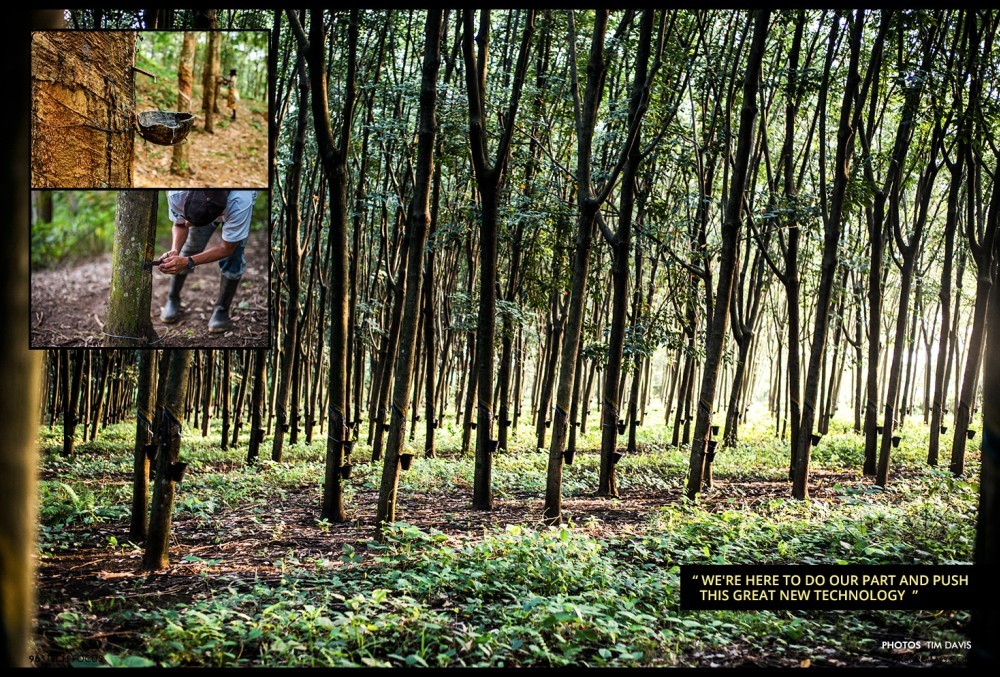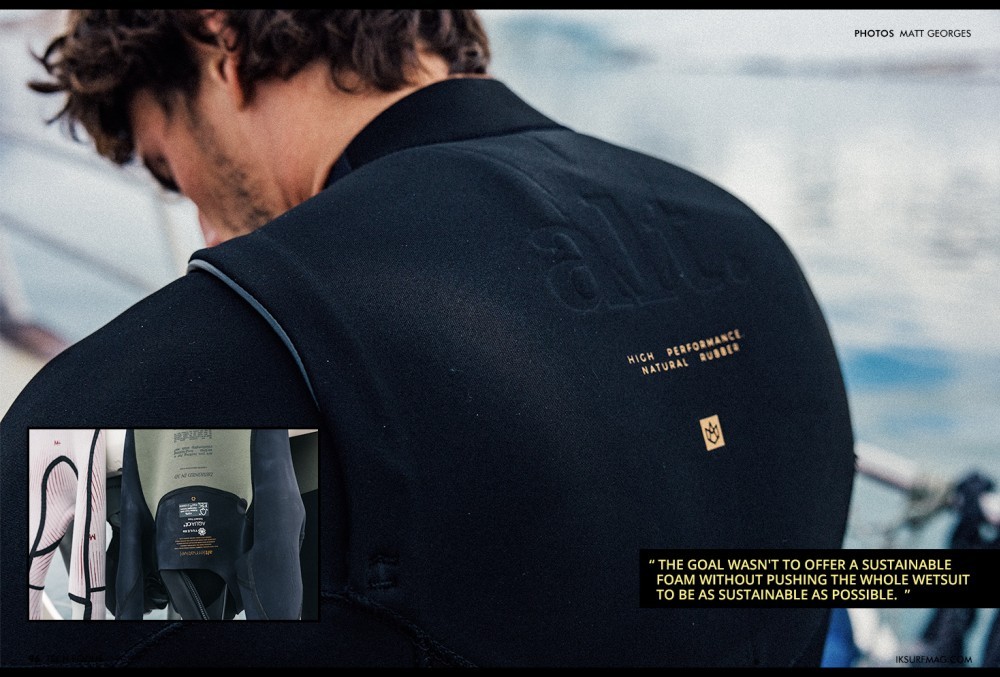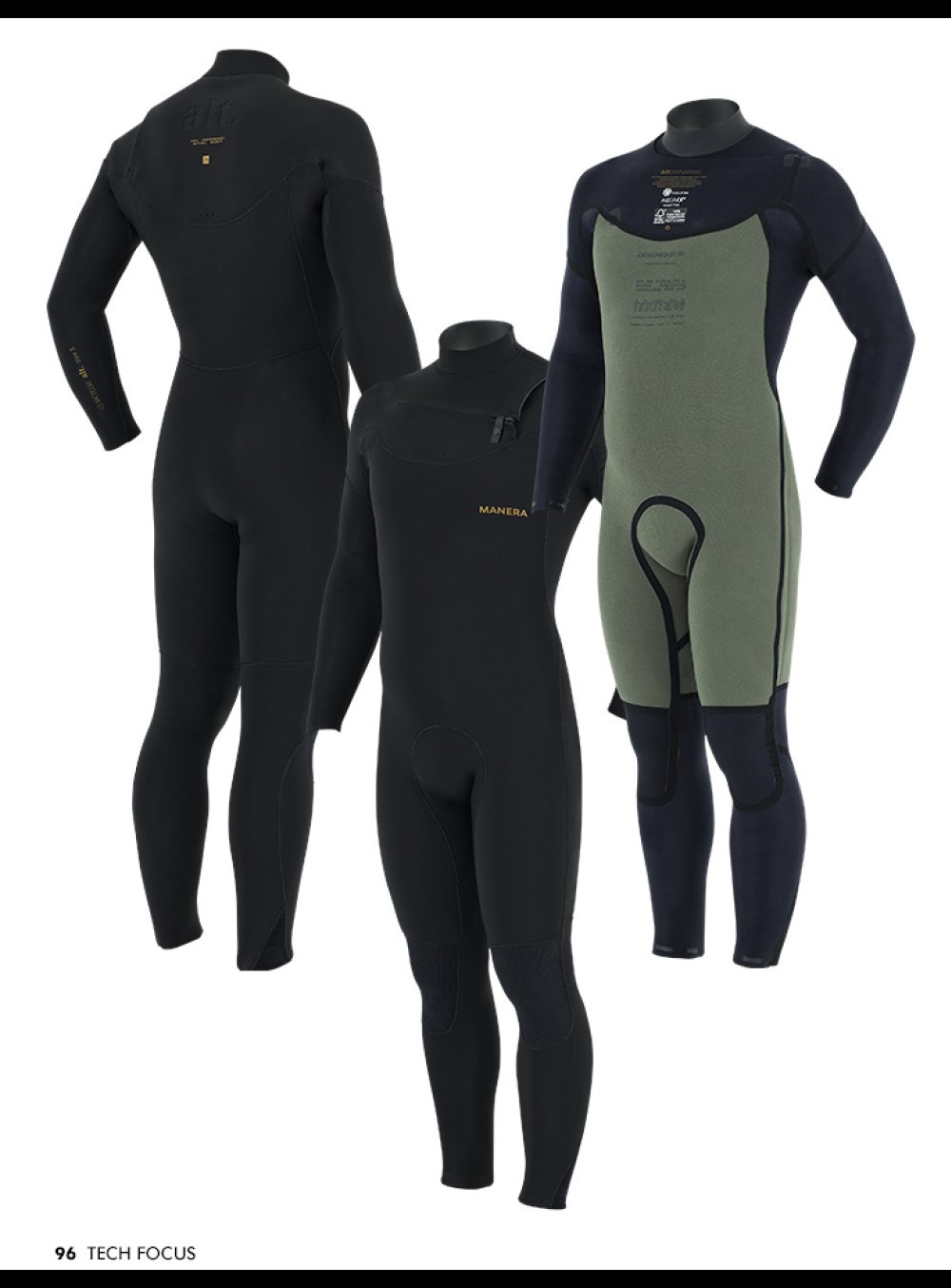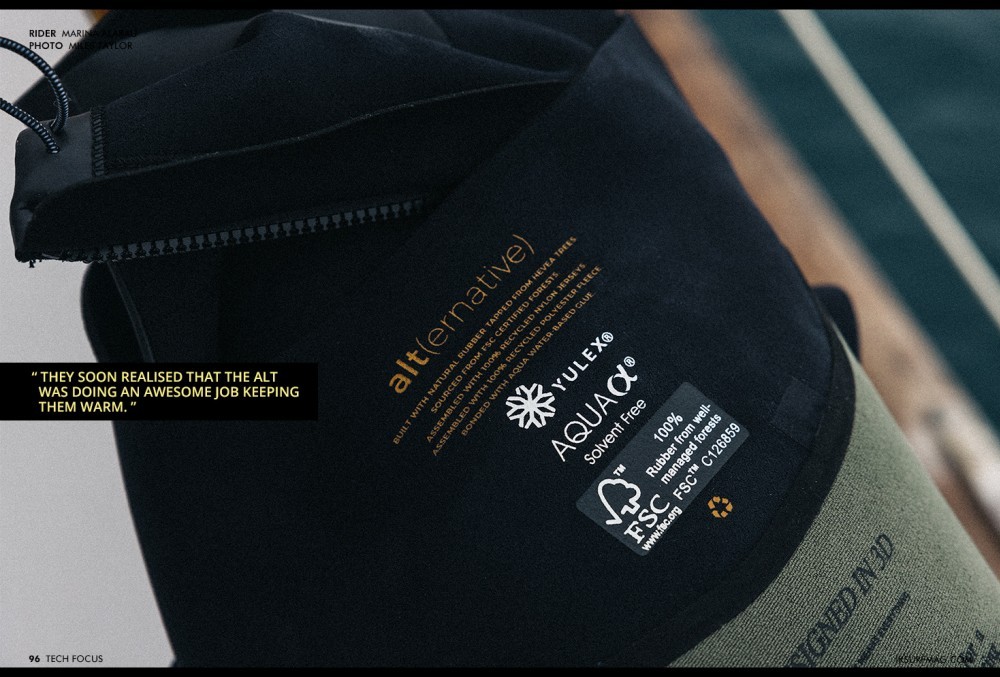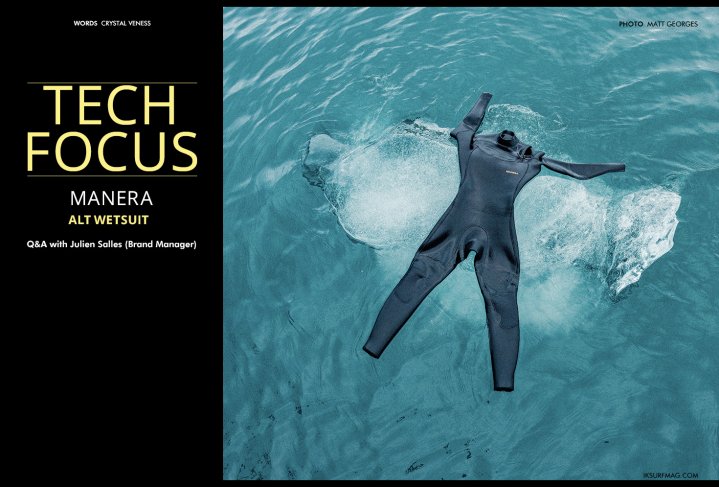
Tech Focus: MANERA Alt Wetsuit
Issue 96 / Thu 15th Dec, 2022
New materials make up most of the headlines in the kite industry these days, but it's not all about the kites! MANERA has taken accessory innovation, and their latest release is one to get excited about. We chat with Brand Manager Julien Salles to find out all about it!
The new MANERA ALT uses 100% natural YULEX rubber. What is this material, and how is it made?
The main ingredient of YULEX foam is natural rubber sourced from hevea trees in Southeast Asia. There is no need to cut down trees to harvest the rubber, and the hevea forests are 100% FSC-certified. Farmers cut open the tree, and the natural rubber "bleeds" from it. Then comes the complicated process, which includes pre-treatment, filtration, dilution, washing, and concentration, which ends up in an emulsion. This emulsion is shipped to our neoprene factory in Cambodia, SHEICO, where it is implemented into our wetsuits.
What inspired MANERA to add the ALT, short for alternative, to the lineup?
We want to inspire people to buy a more sustainable product and inspire other brands to implement YULEX. The price of YULEX wetsuits is 20% higher than our most premium suits, so we're looking at a niche market. But, if more people buy YULEX wetsuits and more brands use YULEX rubber, it becomes more affordable. We're here to do our part and push this great new technology together with brands like Patagonia that have been pioneering it.
What makes this a greener option compared to traditional neoprene?
"Traditional" neoprene can be based on two different raw materials: Petrol or Limestone. Both are finite resources that require a lot of power to extract and transform. Natural rubber, like YULEX, is renewable and requires little energy to transform.
To be more specific*, let's look at the scoreboard for the production of 1kg of synthetic versus 1kg of natural rubber.
Synthetic Rubber: ~3,000 kg CO2e emitted
Natural Rubber: 0 kg CO2e emitted *Sources:
1. Yulex
2. Science magazine (Published 31 August 2018, Science 361, 851 (2018) DOI: 10.1126/science.aar6859)
3. The rubber manufacturers association
Mother Nature makes the best polymers!
Compared to neoprene, are there performance or longevity advantages or disadvantages in YULEX rubber?
At MANERA, we only offer sustainable technology if it's better and equal to the standard technology. We believe being more sustainable is useless if you don't offer a performant and durable product that will actually replace the standard option.
A few years ago, the first YULEX foam didn't offer enough stretch and durability for us to implement it in MANERA wetsuits. But this has changed, and the performance of this foam is now quite impressive! To compare with our actual range, the ALT is as warm as an X10D and as flexible as a MAGMA, which makes it an extremely good wetsuit.
There are, of course, other materials that are used on both the inner and outer layers of the suit. What materials have been selected for the ALT?
The goal wasn't to offer a sustainable foam without pushing the whole wetsuit to be as sustainable as possible. We have used all our current technologies featured in our other models, like aqua glue, dope-dyed yarn, and sustainable packaging, which you can learn more about on MANERA.com.
We also implemented innovative recycled inside and outside fabrics:
Inside jersey is made of 100% recycled nylon (sourced from production wastes)
Outside jersey is made of 83% recycled nylon (sourced from production wastes)
Inside fleece is made of 45% recycled polyester (sourced from recycled bottles)
Tell us a bit more about the SD2 tape. Why did you choose this method to close the seams, and how effective is it in keeping cold water out?
There are a few different stitching technologies available on the market. Flatlock is what you find on an entry-level wetsuit. It is not waterproof and creates rashes, so we don't use it on any of our wetsuits. GBS (glued and BlindStitched) is a specific type of stitching where the needle doesn't go through the whole layer of neoprene to ensure that the seam is waterproof. After a few seasons, this type of stitching might come a bit loose, and some water might leak inside. Liquid seams consist of sealing the seam with a rubber-type liquid. We refuse to use it as it usually hardens after a few seasons and finally cracks open, leaving an unrepairable seam.
SD2 tape is basically a GBS seam with a tape glued on the inside. The tape is made with the same materials as our wetsuits and guarantees the seam is durable and won't tear, even after a few seasons. For us, it's the only way to offer a durable, stretchy, and completely waterproof seam.
The ALT, like all MANERA wetsuits, is designed in 3D. How does this technique make a better-fitting wetsuit?
MANERA has used the 3D DESIGNED WETSUIT principle since its inception. Lay one of our wetsuits flat on the ground and compare it to any other competitor. The MANERA one will be pre-shaped and will look like human arms and legs are already inside.
We have specific software that allows us to design our wetsuits on a 3D model. Doing everything in 3D allows us to choose our mannequin body morphology and position and then adapt it to our sports and customers' body type. Once the wetsuit panels are designed on this mannequin, our software smartly flattens the panels, taking into consideration the neoprene thickness and elasticity to match the 3D design as much as possible.
We are improving and working on our fit every year. However, we feel like we are already quite far ahead compared to other brands that work everything out in 2D or those that just send cutlines to the factory and expect it to work out the fit for them.
Your team riders tested this suit in the icy cold waters of Svalbard. How did it hold up to the cold?
The guys were usually equipped with 6.4 Hooded Magmas and were pretty reluctant to gear up with the 5.4.3 ALT for the shoot! But they soon realised that the ALT was doing an awesome job keeping them warm. By the end of the trip, they didn't mind wearing one or the other; they just wore the one that was the driest!!
Videos
By IKSURFMAG




